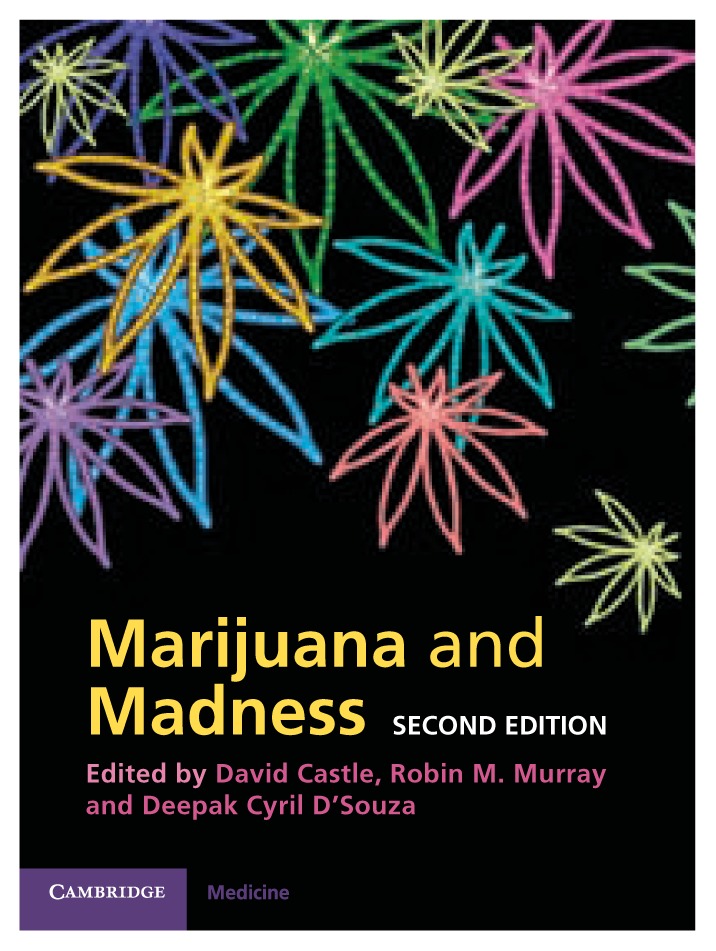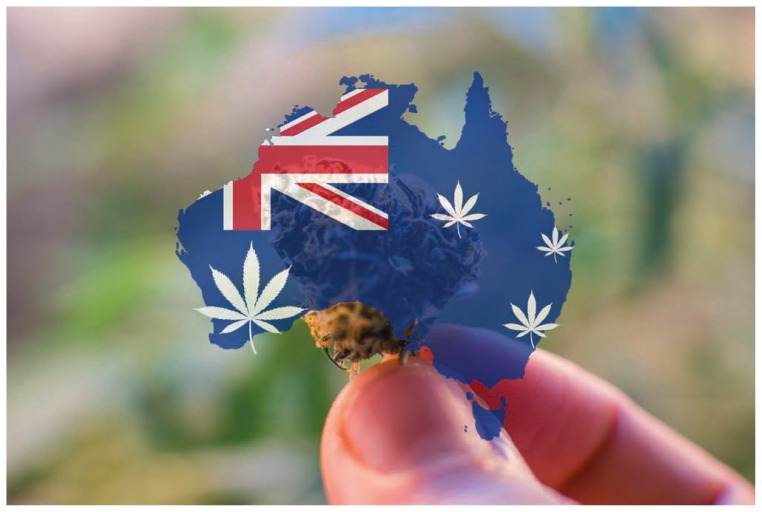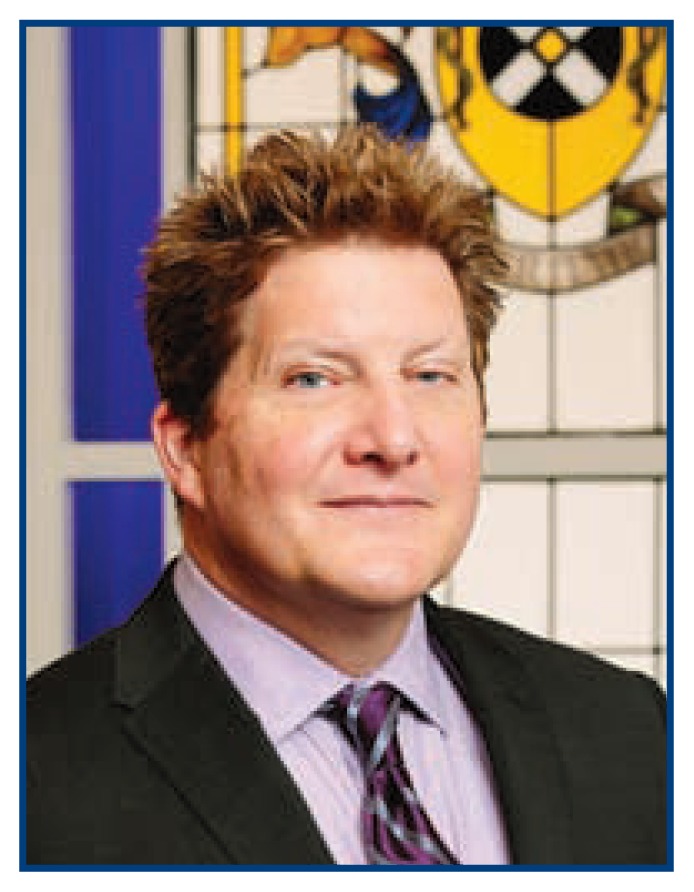Medical marijuana, more accurately termed medicinal cannabinoids, has become big news in Australia over the past few years. Initially prompted by two states in Australia, the Federal Government has followed suit in recent years. In 2014, the New South Wales state government introduced the Terminal Illness Cannabis (TIC) Scheme (now known as the Medicinal Cannabis Compassionate Use Scheme)1 and associated amendments to legislation that made it possible for registered persons with a terminal illness to be in possession of lawfully prescribed cannabis.2 In the state of Victoria, medicinal cannabis was legislated in 2016, under the Medical Cannabis Act. The moves to allow the use of ‘marijuana as medicine’ in Victoria were driven largely by press coverage of parents of children with severe intractable epilepsy (mostly Dravet’s syndrome) who purportedly found cannabis to be the ‘only solution’ to their children’s persistent seizures and who were having to act outside the law to source and administer it.3 The state government is now supporting a medicinal cannabis industry, with a number of companies developing medicinal cannabis plantations and extraction technologies. The potential for states (e.g. Victoria) to become world-leading producers and exporters of medicinal cannabis has much appeal to politicians and entrepreneurs alike. Other states of Australia are coming on board, with a view to potential profits accruing, with dividends for the state coffers. Meanwhile, the Federal Government of Australia has amended the Narcotic Drugs Act of 1967 to allow cultivation of cannabis for medicinal or scientific purposes: similar to what already happens with opium production from poppy cultivation.4
Opening the door to use of cannabis for intractable childhood epilepsy was seen as a highly concerning Pandora’s Box by some and a welcome Trojan Horse by others. Most vociferous, perhaps, have been members of the medical profession, with many seeing the potentially addictive and psychotomimetic properties of cannabis to be of particular concern. The field has also been perturbed by the association of drug use and violence, most notably in hospital emergency departments and psychiatric inpatient units. It is alcohol that remains the most troublesome drug in this regard, followed by crystal methamphetamine. These are rarely emphasized in sensationalized reports, and cannabis is tarnished by association. A case in point is the attorney-general of the state of South Australia vowing to get tough on possession of cannabis, after a fatal shooting of a teenager by another teenager who tested positive for ecstasy, alcohol, and cannabis. 5
On the other hand, many people see the pursuance of criminal controls over cannabis as largely futile, and welcome the opportunity to use it to alleviate suffering. Areas of most interest medically have been spasticity associated with multiple sclerosis. Nabiximols – a spray formulation of tetrahydrocannabinoid (THC) and cannabidiol (CBD) - has a Federal Therapeutic Goods Administration indication for this; childhood epilepsy has a trial using cannabidiol (CBD) that has been supported by the Victorian government; palliative care which the New South Wales government has supported; chronic pain as a specific treatment and for the potential to reduce the use of opioids; and chronic insomnia, with trials funded by industry. Additional studies are planned for both nausea associated with chemotherapy and to promote appetite in people with diseases such as HIV-AIDS. In psychiatry, there has been interest in the use of CBD for anxiety as well for its putative antipsychotic properties. But access to product, cost, and lack of clarity about what combinations of cannabinoids are most likely to be effective for specific conditions are causing considerable difficulty for practitioners. Added to these barriers are bureaucratic complexities, albeit these are becoming more streamlined with time.
In terms of prescribing cannabinoids, a crucial enabler was the Australian Therapeutic Goods Administration (TGA) in 2017 rescheduling cannabis from schedule 9, a prohibited substance, to THC as schedule 8, a controlled drug, and CBD as schedule 4 drug, therefore not subject to the federal or state-based processes required for prescribing other cannabinoids. Thus, technically any medical practitioner can prescribe medicinal cannabinoids, by applying - on a patient-specific basis - for an exemption to do so under the TGA’s Special Access Scheme.6 This requires a specific form of medicinal cannabis to be specified for a particular indication in a particular individual, with a declaration that all other therapeutic endeavours have failed and that the use of cannabis has support from all the patient’s treating doctors. Once this approval has been granted, further sign-off is required from the local state health department, along with signed consent from the patient.7 The patient has to foot the bill for the product. Currently reliance is placed upon imported product, at a cost of some AU$300 a month. This cost is prohibitive for many individuals, resulting in patients, or their carer, turning to illicit sources of cannabis.
The alternative to the individual patient prescribing process is for a practitioner to become an ‘authorised prescriber’ of medicinal cannabis.6 This is also administratively somewhat burdensome, with over 50 pages of material having to be completed and delivered to the TGA. Another twist is that the practitioner requires their application to be reviewed and supported by an ethics committee: the Royal Australian and New Zealand (ANZ) Colleges of Physicians, of General Practice and of Psychiatrists have no established mechanisms in this regard, leaving interested practitioners turning to state-based non-for-profit organizations such as the (Victorian) National Institute of Integrative Medicine.7 Notwithstanding this, Authorised Prescribers are still somewhat restricted in terms of what products they can prescribe, as well as the indications. It is hardly surprising that very few medical practitioners have followed this process; only 35 at this time of writing.
In terms of medical use, the fact that cannabis is an addictive substance and that it has the propensity to worsen the course of psychotic disorders such as schizophrenia, have been evidenced as cautioning against its being used as medicine. Particular concerns have also been raised including by the Royal ANZ College of Psychiatrists (RANZCP),8 in various submissions to state and federal governments about its use in young people, given evidence suggesting a potential causal association between teenage use and later schizophrenia, although the latest memorandum from the RANZCP on the use of medicinal cannabis makes no direct mention of this.9 Australian researchers have also pointed to its potential negative impact – if used at high enough doses and for long enough - on certain aspects of neurocognitive functioning.10 Of course all this needs to be weighed against its potential therapeutic benefits, but the relative paucity of firm data about efficacy and side effects in properly controlled trials which use specific combinations of particular cannabinoids for specific indications, bedevil the field.11 In Australia, both state and federal governments have arguably not backed up legislation to enable the use of medicinal cannabis, with any ongoing commitment to fund good quality research. Funded in 2017 by the National Health and Medical Research Council (NHMRC) through the Centres for Research Excellence scheme, the Australia Centre for Cannabinoid Clinical and Research Excellence (ACRE) is Australia’s first federally-funded research centre in medicinal cannabinoids.12 Much of the current research is being conducted under the auspice of the Lambert Foundation,13 funded by a philanthropist whose grand-daughter’s epilepsy was purportedly able to be controlled only by cannabis extract. Other research is largely being driven by interested scientists and funded through the growing panoply of private companies with an interest in producing medicinal cannabinoids and for commercial profit.
As it happens, cannabis is widely used for recreational purposes in Australia. The Australian Institute of Health and Welfare data from 201614 show over a third of Australians over 14 years have tried cannabis, and ‘recent use’ was reported by 10% of the adult population. It is relatively cheap and easy to access. Also, users often report that imbibing whole plant leads to very different effects than ingestion of medically prepared cannabidiol or delta-9-tetrahydrocanabinol admixtures. This might be due to various interaction effects of the constituents of the plant, including cannabinoids and terpines. Many people will thus continue to use the plant, with concomitant risks relating to the variability in potency, in terms of THC:CBD ratio, as well as imbibing it by smoking, often mixed with tobacco. We have not yet experienced the advent of very high potency cannabis as has been reported in North America,15 but synthetic cannabis products are available and some can precipitate severe psychotic reactions.
In Australia, medicinal cannabinoid products will largely be in oil-based liquid or capsule form (nabiximols is a spray). Australia is rightly proud of its record in reducing rates of cigarette smoking amongst the general population, and support for smoked cannabis, even if for medicinal purposes, is unlikely until thorough evaluation is undertaken. A further problem related to medicinal cannabis is the impact of THC on concentration and fine motor control, and the negative effects on driving ability or the use of machinery. As road-side drug testing is becoming more common in Australia, and given the very long elimination half-life of THC, (in chronic users it can take up to a month to wash out of the body), people prescribed cannabis for medical reasons may be restricted in terms of driving and certain other activities e.g. use of heavy machinery. A recent review which examined the effects of nabiximols in patients with spasticity associated with multiple sclerosis reported it not to impair driving performance.16 It is worth remembering that the THC blood levels associated with medicinal cannabis are often much lower than those associated with recreational cannabis use. The blood level associated with significant impairment is yet to be determined.
BOOK REVIEW.
Marijuana and Madness
by David Castle, Sir Robin M. Murray, and Deepak Cyril D’Souza
Cambridge University Press
ISBN-13: 978-1107000216
ISBN-10: 1107000211
Available on Amazon
The second edition of this critically acclaimed and award-winning text provides a comprehensive overview of the psychiatry and neuroscience of Cannabis sativa (marijuana). It outlines the very latest developments in our understanding of the human cannabinoid system, and links this knowledge to clinical and epidemiological facts about the impact of cannabis on mental health. Clinically focused chapters review not only the direct psychomimetic properties of cannabis, but also the impact consumption has on the courses of evolving or established mental illnesses such as schizophrenia. Effects of cannabis on mood are reviewed, as are its effects on cognition. This new edition has been extensively updated and expanded with 10 new chapters, to incorporate major new research findings.

Reviews
“The editors and publishers of this book have responded to a need for clear, research-based information on a topic of great current concern. They have done an excellent job.” American Journal of Psychiatry
“The chapters are compact but filled with quality research and sophisticated, in-depth analysis. The authors do not oversimplify or overemphasize the evidence. We congratulate them on their accomplishment and recommend this book enthusiastically for all clinicians and researchers interested in substance related issues.” Journal of the American Medical Association
The challenge for Australia will be to make available high quality medicinal cannabis products and develop a sound scientific evidence-base for their use. Of course, this is hardly unique to our country, and many lessons can be learnt from those jurisdictions which have more experience in the field. A potential area of concern is that medicinal cannabis will become touted as a ‘cure all’ by those with a vested interest in selling it, albeit Australia does not allow direct-to-consumer advertising for prescription medications. We would call on our state and federal governments to put in place comprehensive monitoring systems and tracking of outcomes associated with medicinal cannabis, such that a ‘real life’ scientific evidence base can be developed.
We also support properly conducted trials of medicinal cannabis in its various forms and presentations; with careful scrutiny of any adverse effects both at an individual patient level as well as more broadly in society as messaging that cannabis is ‘safe and good for you’ could potential encourage use, with potential detrimental effects, notably amongst young people whose brains are still developing and in whom drugs such as cannabis can have negative effects on cognition and mood and (in those with a vulnerability) psychosis.17
Footnotes
David J. Castle, MD, FRANZCP, Professor of Psychiatry, St. Vincent’s Hospital and the University of Melbourne, Australia. Nigel Strauss, FRANZCP, Medical Director, Millswyn Clinic, South Yarra, Australia. Amanda Norman, BA, Department of Addiction Medicine, St. Vincent’s Hospital, Melbourne, Australia. Yvonne Bonomo, MD, PhD, Department of Addiction Medicine, St. Vincent’s Hospital, Melbourne, Australia, and the University of Melbourne, Australia.
Contact: david.castle@svha.org.au
References
- 1. [Accessed 10 January 2018]. https://www.medicinalcannabis.nsw.gov.au/patient-access/medicinal-cannabis-compassionate-use-scheme.
- 2. [Accessed 10 January 2018]. https://legislation.nsw.gov.au/bills/d0dd3016-c40c-4c32-a48a-4e5fe520a4b9.
- 3. [Accessed 10 January 2018]. https://www.heraldsun.com.au/news/victoria/desperate-parents-turn-to-medical-marijuana-in-lastditch-effort-to-improve-their-childrens-lives/news-story/11d70cfbec24e37668d8dd53378d33eb.
- 4. [Accessed 10 January 2018]. https://www.legislation.gov.au/Details/C2016A00012.
- 5. [Accessed 10 January 2018]. https://www.abc.net.au/news/2018-07-02/sa-government-to-quadruple-cannabis-fines/9930344.
- 6. [Accessed 10 January 2018]. https://www.tga.gov.au/access-medicinal-cannabis-products-using-access-schemes.
- 7. [Accessed 10 January 2018]. https://www.themonthly.com.au/issue/2018/october/1538316000/karen-hitchcock/drugs-medication-legalisation-and-pleasure.
- 8. [Accessed 10 January 2018]. https://www.ranzcp.org/files/resources/submissions/0577o-president-to-tga-re-therapeutic-goods-orde.aspx.
- 9. [Accessed 10 January 2018]. https://www.ranzcp.org/files/resources/college_statements/clinical_memoranda/cm-medical-use-of-cannabinoids-v1-0-october-2018.aspx.
- 10.Solowij N. The Complex Connection Between Cannabis and Schizophrenia. 2018. Psychotomimetic and cognitive effects of cannabis use in the general population; pp. 129–155. [Google Scholar]
- 11.MacCallum CA, Russo EB. Practical considerations in medical cannabis administration and dosing. European Journal of Internal Medicine. 2018;49:12–9. doi: 10.1016/j.ejim.2018.01.004. [DOI] [PubMed] [Google Scholar]
- 12. [Accessed 10 January 2018]. https://www.australiancannabinoidresearch.com.au/
- 13. [Accessed 10 January 2018]. https://sydney.edu.au/lambert/
- 14.Claydon C, Webber K, Sweeney J. National Drug Strategy Household Survey 2016: detailed findings. Australian Government Department of Health; Canberra: 2017. [Google Scholar]
- 15.Hagan JC., III Big Tobacco, big opioid, big weed. Missouri Medicine. 2018;115:476–480. [PMC free article] [PubMed] [Google Scholar]
- 16.Celius EG, Vila C. The influence of THC: CBD oromucosal spray on driving ability in patients with multiple sclerosis-related spasticity. Brain and Behavior. 2018;8:e00962. doi: 10.1002/brb3.962. [DOI] [PMC free article] [PubMed] [Google Scholar]
- 17.Stuyt E. The problem with the current high potency THC marijuana from the perspective of an addiction psychiatrist. Missouri Medicine. 2018;115:482–486. [PMC free article] [PubMed] [Google Scholar]




